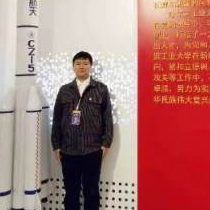Carbon Dioxide Capture, Utilization and Storage (CCUS) Ⅱ
A special issue of Energies (ISSN 1996-1073). This special issue belongs to the section "B3: Carbon Emission and Utilization".
Deadline for manuscript submissions: closed (31 March 2024) | Viewed by 3575
Special Issue Editors
Interests: carbon dioxide capture, utilization and storage (CCUS); hydrogen production from biomass with high-efficiency and clean energy (hydrogen energy); efficient use of solar energy (nano photocatalysis); construction and application of functional carbon (optical-electric-magnetic-energy storage); micro-nano mesoscopic scale reaction simulation and control (computational simulation)
Special Issues, Collections and Topics in MDPI journals
Interests: synthesis solid sorbent for CO2 capture; thermocatalytic and photocatalytic CO2 reduction; catalytic hydrogenation of CO2; redox cycle and calcium looping for thermochemical energy storage (TCES); low corbon energy synthesis; pollutant control from fossil energy utilization
Special Issues, Collections and Topics in MDPI journals
Interests: clean use of fossil energy; preparation of carbon-based functional materials; intelligent diagnosis of equipment burning natural gas; mixing hydrogen and ammonia; mechanism of action of metallic substances in polycyclic aromatic hydrocarbon pyrolysis/carbon sooting process
Interests: carbon dioxide capture, utilization, and storage (CCUS); development of biochar-based functional materials; efficient prevention and control of pollutants
Special Issue Information
Dear Colleagues,
Currently, increasing anthropogenic emissions of CO2 are identified as the major driver of global warming. Carbon dioxide capture, utilization, and storage (CCUS) technology is broadly recognised as one of the near-term to mid-term solutions, which plays a key role with respect to climate change mitigation.
This Special Issue titled “Carbon Dioxide Capture, Utilization, and Storage (CCUS)” invites articles that address state-of-the-art technologies and new developments for CCUS, including but not limited to precombustion carbon capture, post-combustion carbon capture, oxy-fuel or chemical looping combustion, CO2 conversion to generate synthetic fuels, biomass thermal conversion, CO2 storage, BECCUS, and other negative emission technologies. Articles that engage with the latest research topics with respect to CCUS are particularly encouraged, such as direct air capture, electrochemical and thermochemical CO2 catalytic reduction, biological conversion of CO2, etc. Moreover, articles that discuss and drive the research directions of CCUS would be of particular interest.
Dr. Dongdong Feng
Dr. Jian Sun
Dr. Heming Dong
Dr. Yu Zhang
Guest Editors
Manuscript Submission Information
Manuscripts should be submitted online at www.mdpi.com by registering and logging in to this website. Once you are registered, click here to go to the submission form. Manuscripts can be submitted until the deadline. All submissions that pass pre-check are peer-reviewed. Accepted papers will be published continuously in the journal (as soon as accepted) and will be listed together on the special issue website. Research articles, review articles as well as short communications are invited. For planned papers, a title and short abstract (about 100 words) can be sent to the Editorial Office for announcement on this website.
Submitted manuscripts should not have been published previously, nor be under consideration for publication elsewhere (except conference proceedings papers). All manuscripts are thoroughly refereed through a single-blind peer-review process. A guide for authors and other relevant information for submission of manuscripts is available on the Instructions for Authors page. Energies is an international peer-reviewed open access semimonthly journal published by MDPI.
Please visit the Instructions for Authors page before submitting a manuscript. The Article Processing Charge (APC) for publication in this open access journal is 2600 CHF (Swiss Francs). Submitted papers should be well formatted and use good English. Authors may use MDPI's English editing service prior to publication or during author revisions.
Keywords
- CO2 capture
- CO2 conversion and reduction
- biomass thermal conversion
- oxy-fuel or chemical looping combustion
- CO2 storage
- CO2 mineralization
- other greenhouse gas emissions control








